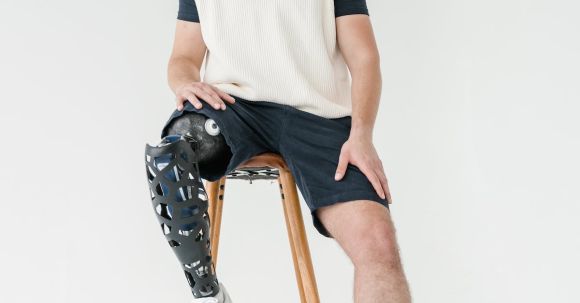Advancements in technology have revolutionized the field of prosthetics, enabling individuals with limb loss to regain their independence and functionality through the use of bionic limbs. These cutting-edge devices, inspired by science fiction, have become a reality, providing hope and improved quality of life for those in need. But how exactly do bionic limbs work?
Understanding the Basics
Bionic limbs, also known as prosthetic limbs, are artificial devices that replace missing or non-functional limbs. They are designed to mimic the functionality and appearance of natural limbs, giving users the ability to perform everyday tasks with ease. The key to the success of bionic limbs lies in their ability to interface with the human body, effectively bridging the gap between man and machine.
Neural Interfaces
One of the crucial components of bionic limbs is the neural interface. This technology allows the limb to communicate with the user’s nervous system, enabling them to control the limb intuitively. Neural interfaces can take various forms, including myoelectric interfaces, which utilize the electrical signals generated by the user’s muscles, and brain-computer interfaces, which directly tap into the user’s brain signals.
Myoelectric Control
Myoelectric control is a widely used method for operating bionic limbs. It involves placing electromyography (EMG) sensors on the user’s residual limb, which detect the electrical activity produced by their muscles. These signals are then analyzed and translated into commands that control the movement of the bionic limb. By simply thinking about moving their missing limb, users can activate their bionic limb and perform complex movements.
Sensory Feedback
While the ability to control a bionic limb is crucial, it is equally important to provide users with sensory feedback. Sensory feedback allows users to perceive touch, pressure, and temperature, enhancing their sense of embodiment and improving their ability to interact with the world around them. Various techniques, such as vibrotactile feedback or invasive nerve interfaces, are being developed to provide users with a natural and intuitive sensory experience.
Powered Actuators
Powering the movement of bionic limbs requires the use of advanced actuators. These actuators are responsible for generating the forces and torques required for natural limb movements. Electric motors, pneumatic systems, or hydraulic systems are commonly used to drive the joints of bionic limbs, ensuring smooth and precise movements. The control algorithms implemented in these devices enable users to perform a wide range of actions, from delicate grasping to forceful lifting.
Materials and Design
The materials and design of bionic limbs play a crucial role in their functionality and comfort. Lightweight and durable materials, such as carbon fiber and titanium, are commonly used to ensure the strength and flexibility of the limb. The design of bionic limbs also takes into account factors such as weight distribution, socket fit, and cosmesis, aiming to provide users with a comfortable and aesthetically pleasing limb that seamlessly integrates with their body.
The Future of Bionic Limbs
The field of bionic limbs is constantly evolving, with researchers and engineers pushing the boundaries of what is possible. Advances in materials science, robotics, and artificial intelligence are paving the way for even more sophisticated and lifelike bionic limbs. The integration of sensors and artificial intelligence algorithms promises to provide users with enhanced control and sensory feedback, making bionic limbs feel more natural and intuitive.
In conclusion, bionic limbs have revolutionized the lives of individuals with limb loss, providing them with the opportunity to regain their independence and functionality. Through the use of neural interfaces, myoelectric control, sensory feedback, powered actuators, and innovative materials and design, bionic limbs are able to replicate the functionality and appearance of natural limbs. With ongoing advancements in technology, the future of bionic limbs looks promising, offering hope for a better quality of life for those in need.





